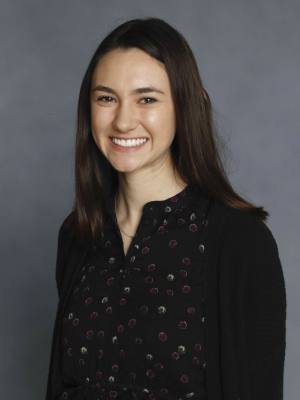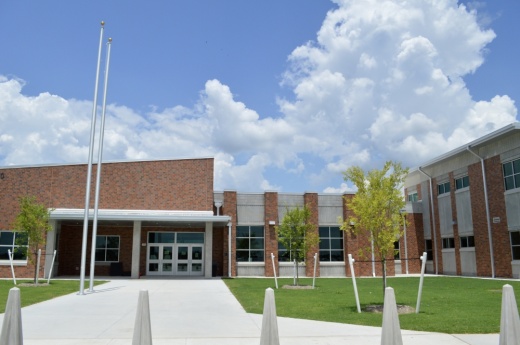LISD is the fastest-growing school district in the Austin metro area based on the number of students added annually. In the last two decades, the district has opened 19 elementary schools, seven middle schools and four high schools to accommodate the growing number of students in the district.
Rapid growth has several effects on the school district: hiring and supporting new staff members, building schools at the right time and using short-term growth solutions such as portables.
Superintendent Bruce Gearing said he believes the district’s growth is manageable, and unmanageable growth would look like multiple schools opening at once, which would be challenging from a maintenance and budget perspective.
“There is no way that we could manage the amount of facility additions that we have to do—and most importantly maintain our current facilities at that same high standard—without going to the voters to ask for those bonds,” Gearing said. “That’s just the reality of a fast-growth district like Leander.”
The pandemic did have a temporary effect on enrollment growth. Enrollment decreased by about 2.5% between 2019-20 and 2020-21—the district’s only decrease in enrollment to date. But the district is back on track to pre-pandemic growth for the 2021-22 year, Gearing said.
“It did turn out, as the demographer predicted, to be just that blip on the radar,” Gearing said. “We already surpassed our budget-projected enrollment number and are fast approaching the demographic projection number.”
New students, new schools
Building 30 schools in 20 years outpaces neighboring districts’ school construction. For comparison, neighboring Round Rock ISD opened 15 schools in the same time period, according to RRISD’s website.
The district has seen the most enrollment increases in kindergarten and prekindergarten classes this year. Fourteen LISD elementary classrooms exceeded student-teacher ratios before the 2021-22 school year began. LISD trustees approved adding 14 more full-time positions July 22 to the budget due to “exponential growth.” Funding comes from the federal Elementary and Secondary School Emergency Relief, or ESSER, funds.
The district and board members briefly considered holding construction on Elementary School No. 29 following declined enrollment in the pandemic. However, officials decided construction will continue with plans to open the school in August 2022.
The district uses annual demographic data from a third-party group as one method to guide its growth decisions, such as when to open schools and where to build them within the district.
Jimmy Disler, the district’s chief facilities officer, said these short-term projections are critical in planning for land acquisition and construction timing.
“We’re not in the business to build schools. We’re really in the business to educate kids,” Disler said. “But we have to react to what the community and cities are doing. If they’re growing, we’ve got to have a place to put those kids.”
The most recent report shows the district would need to open eight schools by 2026 to meet growth. This includes six elementary schools, one middle school and one high school.
Disler said these schools are “no doubt” needed. Projections show between 10,000 and 16,000 more new students could come in the next 10 years. The district could delay opening a new high school with a school of choice, or magnet school, option listed in the bond recommendation.
Gearing said growth allows for opportunities to provide an exceptional education such as schools of choice at the high school level. One option is an early college high school partnership with Austin Community College.
“Growth has given us the opportunity to have that conversation and decide if [schools of choice are] right for our community,” Gearing said. “If we were not growing, we would not necessarily have those kinds of opportunities.”
Growth’s effects on learning
Disler said portables are used as short-term growth solutions because they buy the district time to build a campus and prevent underutilized schools. There are 106 portables across the district with 91 at schools, according to LISD. This includes 62 portables at elementary schools, 17 at middle schools, 12 at high schools and 15 at other district locations.
However, portables are not ideal learning environments because the space is not flexible and restrooms are farther away. Parents, understandably, do not like their children learning there, he said.
“I think we all agree if we weren’t growing, we could do our education better because growth puts a strain on [our] system,” Disler said.
Opening on average one campus annually also puts strain on the district’s hiring and training departments.
With every new school, a new cohort of campus leaders, teachers and staff are hired, said Jennifer Collins, the district’s assistant superintendent of curriculum. For example, over 80 new staff members were hired for Tarvin Elementary.
Collins said rapid growth often means last-minute teacher hires the day before school starts or after the school year begins due to increased students in a particular grade or area.
“Our biggest impact in curriculum is ensuring that all of these new teachers that come into our system have the support they need,” Collins said.
Another issue is the shortage of instructional materials. For example, with higher prekindergarten enrollment than anticipated, Collins said she is purchasing extra materials before students arrive at school.
Calling a bond
District growth leads to voter-approved bond elections, such as the newly called Nov. 2 bond. Districts ask voters to approve bond packages to build schools and improve existing facilities. The 2021 bond projects would take place over three years, if approved, and includes three propositions.
Leander school board members called a bond election Aug. 5 for $772.2 million based on a citizen committee recommendation. This bond package was narrowed from a $1.5 billion project list.
Board President Trish Bode said growth impacts everything from student-teacher ratios to transportation. The combined input of the community, the LISD Citizens’ Facility Advisory Committee, trustees and administration will create smarter solutions to grow the district responsibly, Bode said.
“It’s the multitude of voices that will make stronger, smarter decisions for our district,” Bode said.
Shaun Cranston, who was a committee co-chair, told the board the 150-person committee recommended only what is needed to provide an education to LISD’s students.
“What we’re showing you is a very nonpartisan, nonpolitical list of needs that our students need and that our teachers need in order to provide for our students,” Cranston said Aug. 3.
Disler said though all the projects from the citizen-driven recommendation are important to the district, he said three projects are vital: the broadband network project; a science materials warehouse; and capital renewal projects such as air conditioning, lighting, paint and furniture replacements. Disler said campus renovations renew the students’ and the community’s pride in their schools.
“When you go into the facilities on the first day they come back into school, they’re amazed at the difference it does to the campus,” Disler said. “It’s eye-opening to see those kids smile—they’re so proud of it.”
This article is part of the Community Impact Newspaper Cedar Park-Leander edition's 2021 Public Education Edition. Read this article on pages 30 and 31 of the August issue.





